Identification and cytoprotective function of a novel nestin isoform, Nes-S, in dorsal root ganglia neurons
- PMID: 23319587
- PMCID: PMC3605656
- DOI: 10.1074/jbc.M112.408179
Identification and cytoprotective function of a novel nestin isoform, Nes-S, in dorsal root ganglia neurons
Abstract
In this study, the first nestin isoform, Nes-S, was identified in neurons of dorsal root ganglia (DRG) of adult rats. Nes-S cannot form filaments by itself in cytoplasmic intermediate filament-free SW13 cells. Instead, it co-assembles into filaments with vimentin when transfected into vimentin(+) SW13 cells, and with peripherin and neurofilament proteins when transfected into N2a cells. In primary DRG neurons, endogenous Nes-S co-assembles with peripherin and neurofilament proteins. The expression of Nes-S first appears in DRG at postnatal day 5 and persists to adulthood. Among the adult tissues we examined, the expression of Nes-S is restricted to the sensory and motor neurons. Finally, exogenous Nes-S enhances viability when transfected into N2a cells, and knockdown of endogenous Nes-S impairs the survival of DRG neurons in primary cultures. Taken together, Nes-S is a new neuronal intermediate filament protein that exerts a cytoprotective function in mature sensory and motor neurons.
Figures
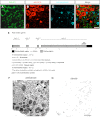
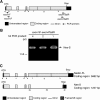
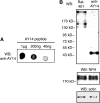



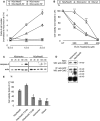
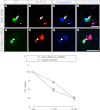
Similar articles
-
Identification of a rod domain-truncated isoform of nestin, Nes-SΔ₁₀₇₋₂₅₄, in rat dorsal root ganglia.Neurosci Lett. 2013 Oct 11;553:181-5. doi: 10.1016/j.neulet.2013.08.035. Epub 2013 Aug 29. Neurosci Lett. 2013. PMID: 23994057
-
Developmental regulation of two distinct neuronal phenotypes in rat dorsal root ganglia.Neuroscience. 1996 Mar;71(1):243-58. doi: 10.1016/0306-4522(95)00404-1. Neuroscience. 1996. PMID: 8834406
-
Neuronal intermediate filament expression in rat dorsal root ganglia sensory neurons: an in vivo and in vitro study.Neuroscience. 2008 Jun 2;153(4):1153-63. doi: 10.1016/j.neuroscience.2008.02.080. Epub 2008 Mar 22. Neuroscience. 2008. PMID: 18434031
-
Associations between intermediate filament proteins expressed in cultured dorsal root ganglion neurons.J Neurosci Res. 1997 Feb 1;47(3):300-10. J Neurosci Res. 1997. PMID: 9039652
-
Synemin isoforms during mouse development: multiplicity of partners in vascular and neuronal systems.Exp Cell Res. 2009 Mar 10;315(5):769-83. doi: 10.1016/j.yexcr.2008.12.009. Epub 2008 Dec 24. Exp Cell Res. 2009. PMID: 19124017
Cited by
-
Nestin Selectively Facilitates the Phosphorylation of the Lissencephaly-Linked Protein Doublecortin (DCX) by cdk5/p35 to Regulate Growth Cone Morphology and Sema3a Sensitivity in Developing Neurons.J Neurosci. 2020 May 6;40(19):3720-3740. doi: 10.1523/JNEUROSCI.2471-19.2020. Epub 2020 Apr 9. J Neurosci. 2020. PMID: 32273484 Free PMC article.
-
Single-cell western blotting.Nat Methods. 2014 Jul;11(7):749-55. doi: 10.1038/nmeth.2992. Epub 2014 Jun 1. Nat Methods. 2014. PMID: 24880876 Free PMC article.
-
Retinal gliosis and phenotypic diversity of intermediate filament induction and remodeling upon acoustic blast overpressure (ABO) exposure to the rat eye.Exp Eye Res. 2023 Sep;234:109585. doi: 10.1016/j.exer.2023.109585. Epub 2023 Jul 21. Exp Eye Res. 2023. PMID: 37481225 Free PMC article.
-
Sox2 in the adult rat sensory nervous system.Histochem Cell Biol. 2014 Mar;141(3):301-9. doi: 10.1007/s00418-013-1158-x. Epub 2013 Oct 31. Histochem Cell Biol. 2014. PMID: 24170317
-
Nestin in immature embryonic neurons affects axon growth cone morphology and Semaphorin3a sensitivity.Mol Biol Cell. 2019 May 1;30(10):1214-1229. doi: 10.1091/mbc.E18-06-0361. Epub 2019 Mar 6. Mol Biol Cell. 2019. PMID: 30840538 Free PMC article.
References
-
- Lendahl U., Zimmerman L. B., McKay R. D. (1990) CNS stem cells express a new class of intermediate filament protein. Cell 60, 585–595 - PubMed
-
- Yang H. Y., Lieska N., Goldman A. E., Goldman R. D. (1992) Colchicine-sensitive and colchicine-insensitive intermediate filament systems distinguished by a new intermediate filament-associated protein, IFAP-70/280 kD. Cell Motil. Cytoskeleton 22, 185–199 - PubMed
-
- Steinert P. M., Chou Y. H., Prahlad V., Parry D. A., Marekov L. N., Wu K. C., Jang S. I., Goldman R. D. (1999) A high molecular weight intermediate filament-associated protein in BHK-21 cells is nestin, a type VI intermediate filament protein: limited co-assembly in vitro to form heteropolymers with type III vimentin and type IV α-internexin. J. Biol. Chem. 274, 9881–9890 - PubMed
Publication types
MeSH terms
Substances
LinkOut - more resources
Full Text Sources
Other Literature Sources

